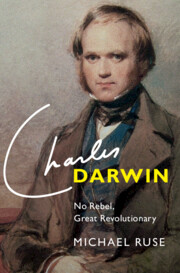Book contents
- Charles Darwin
- Frontispiece
- Charles Darwin
- Copyright page
- Dedication
- Contents
- Figures
- Acknowledgments
- Introduction
- 1 Beginnings
- 2 Charles Robert Darwin
- 3 The Origin of Species
- 4 Evolution in the Nineteenth Century
- 5 Evolution in the Twentieth Century
- 6 Normal Science
- 7 Philosophy
- 8 Religion
- 9 Literature
- 10 Social Issues
- Epilogue
- References
- Index
1 - Beginnings
Published online by Cambridge University Press: 05 December 2024
- Charles Darwin
- Frontispiece
- Charles Darwin
- Copyright page
- Dedication
- Contents
- Figures
- Acknowledgments
- Introduction
- 1 Beginnings
- 2 Charles Robert Darwin
- 3 The Origin of Species
- 4 Evolution in the Nineteenth Century
- 5 Evolution in the Twentieth Century
- 6 Normal Science
- 7 Philosophy
- 8 Religion
- 9 Literature
- 10 Social Issues
- Epilogue
- References
- Index
Summary
Since the Greeks, our world has been understood in terms of one of two root metaphors – the world as an organism (“organicism”) and the world as a machine (“mechanism”). With the coming of evolutionary ideas in the eighteenth century, we see that there are interpretations in terms of both metaphors.
Information
- Type
- Chapter
- Information
- Charles DarwinNo Rebel, Great Revolutionary, pp. 4 - 19Publisher: Cambridge University PressPrint publication year: 2024
